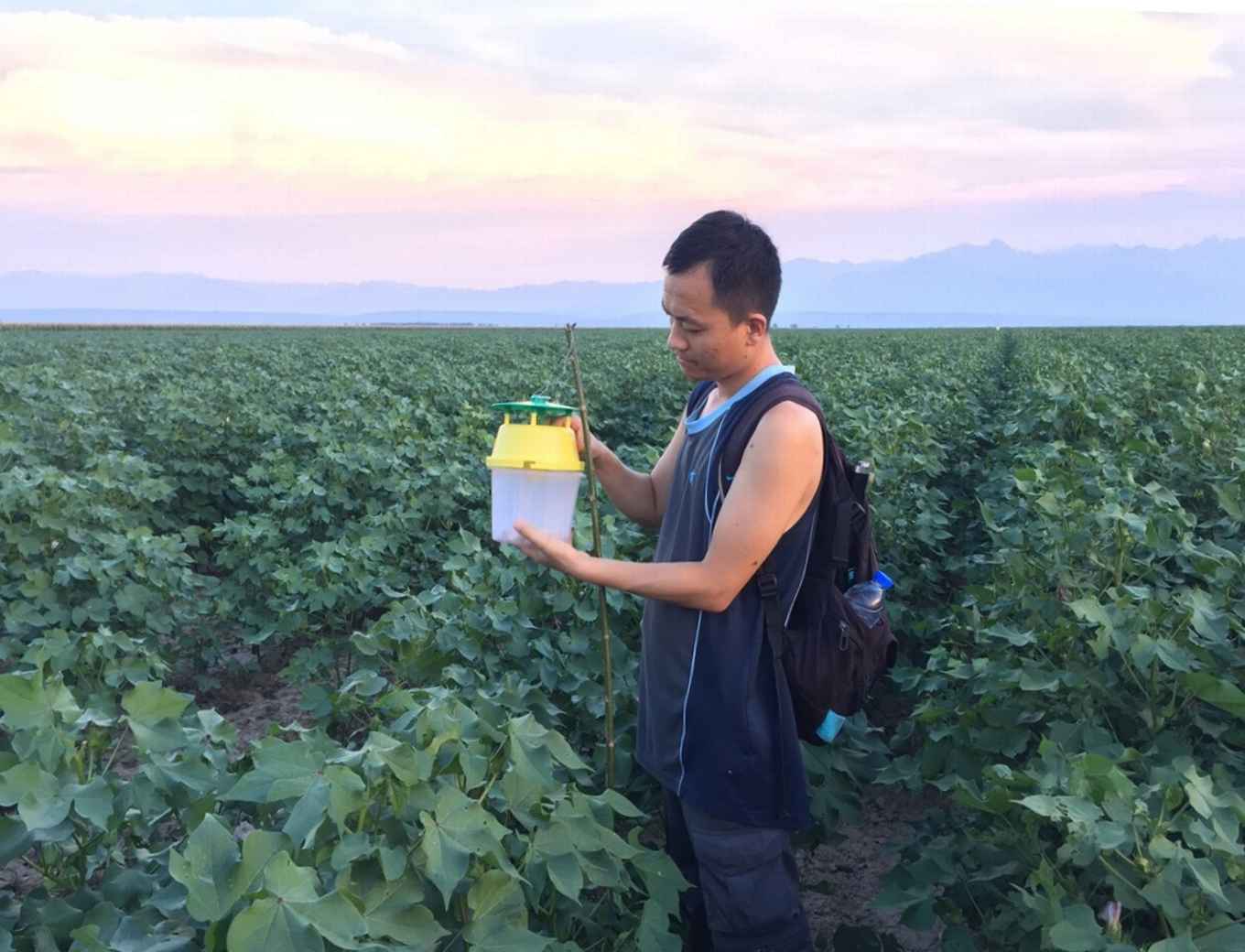Greetings from… Gaolifang, China
14 September 2017

‘Currently I am in a village called Gaolifang in the northwest corner of the Chinese province Shaanxi. Here I investigate the nightly activity rhythms and sexual attraction signals of the pest insects.’
Field experiments on pest insects
‘The main tobacco-growing area in Shaanxi province was one of my destinations to investigate the nightly activity rhythms and sexual attraction signals of the oriental tobacco budworm Helicoverpa assulta and its closely related species, the cotton bollworm H. armigera. Both moth species are major pests on many crops, including tobacco, and have likely evolved different circadian rhythms or sexual signals to minimize communication interference. My aim there was to observe the nightly activity rhythm of both moth species in different fields and to determine the level of sexual communication interference between the two species in areas where they co-occur compared to areas where only one of them occurs.’
‘I invited a bachelor student from China, Kong Xiandong, to help me with the field experiments. When we were working in the field to local peasant came by and asked us why we did not kill all the pest insects on the tobacco plants when we sprayed insecticides. Both of us did not have an easy answer to the peasant’s question.’
Night work
‘During the day, it is so arid and hot that the sun can melt the ground. So we were happy to work during the night. To assess sexual communication interference, we placed monitoring traps with different synthetic pheromone lures in the tobacco field in the afternoon and counted the number of males of the moths in the different traps the next morning to determine which lures caught most moths. To better understand the nightly activities of H. armigera males, we also counted the number of males approaching to the pheromone traps every 30 mins from sunset to sunrise.’
‘To complete these experiments, we had to spend one week in the tobacco field, and we were kindly invited by a local family at the edge of the village to stay in their house, even though it was a poor family with no water and electricity in their house, which brought back memories to the village in my childhood in 1980s (also in rural China). Despite their poverty, the owners were very kind and warm, and offered us their best room in their house, and also cooked meals for us every day.’
‘It was the second time in their memory that educated youth came to their countryside, and they were remarking that it might not be easy here for us. Many peasants in villages in China live in similar conditions, spending almost their whole life working and taking care of their own fields, like their own children, whom I saw hoeing the weeds in the fields in the early morning and late afternoon every day. Because their main income depends on their tobacco fields, they spray chemical insecticides almost every week to try to control the caterpillars on the tobacco plants. However, they do not realize that the more they use insecticides, the more adverse consequences this has, with development of pesticide resistance and resurgence problems. Unfortunately, I could not give them any direct advice of how to combat the pests, except for trying to spray only when they see many caterpillars.’
Next destination
‘My next destination is Zhaodu, a town in the east of Shaanxi province, where I will conduct similar experiments in cotton fields. Hopefully my research will contribute to find sustainable solutions to control pest insects, such as the cotton bollworm and the tobacco budworm. By identifying local pheromone signatures, region-specific lures can at least monitor more accurately when the pests are present, so that spraying can be minimized to those periods.’